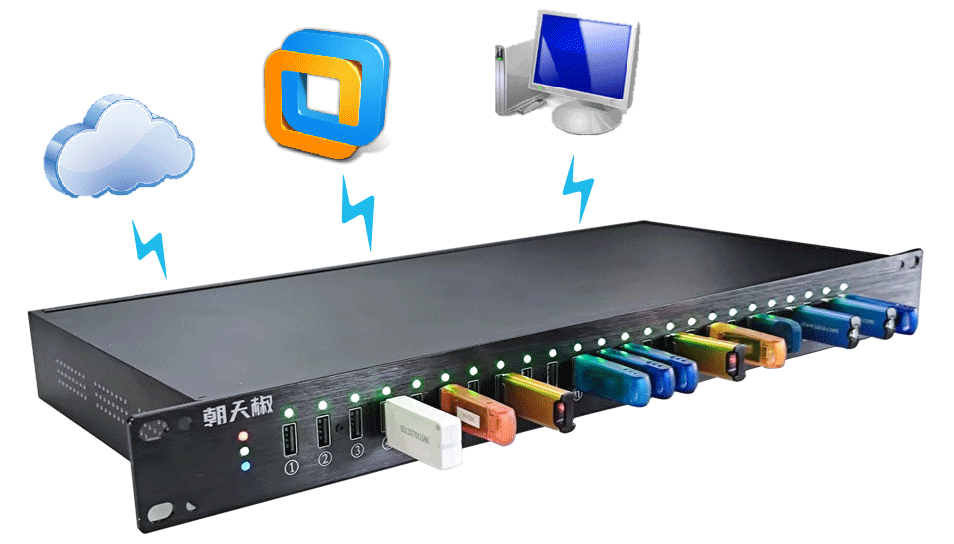In today’s hyper-connected world, USB over Ethernet has become a quiet revolution in how we connect and share devices. Instead of being chained to short USB cables, you can now access printers, dongles, scanners, and even lab tools over your network as if they were local. Tools like ChilliSky USB Server make this process simple and secure, helping you turn your USB devices into powerful, network-ready tools accessible from anywhere.

The Big Idea Behind USB over Ethernet
At its heart, USB over Ethernet is a bridge between two worlds—the physical and the digital. Normally, a USB connection works only a few meters long. It’s like having a leash on your devices. But USB over Ethernet breaks that leash. It captures your USB signals and sends them across your Ethernet network using TCP/IP data packets.
Your computer still “thinks” the device is plugged in locally, but in truth, it might be in another room or even another city. That’s the magic of USB over Ethernet—it turns a local USB port into a global connection.
This technology supports both USB 2.0 and USB 3.0, ensuring stable, high-speed data transfer through your gigabit Ethernet. Whether you’re handling USB dongles, webcams, or lab sensors, it just works.

The Technology That Makes It Possible
Let’s break down the process.
A USB device server—like the ChilliSky USB Server—sits between your USB device and your network. It connects your USB devices over a network, translating USB signals into data packets that travel through Ethernet. These packets move using standard TCP/IP communication.
On the receiving end, client software on a remote computer takes those packets and reconstructs them. To your system, it looks exactly like a local USB connection.
Think of it like teleportation for USB. The device doesn’t physically move, but its functionality does.
This setup lets you manage USB ports, monitor traffic through a device manager, and even share one USB device among several remote clients.
The Real Power: Why It Matters
Why go through the trouble? Because USB over Ethernet makes your setup more flexible, efficient, and future-proof.
1. Remote USB Access
Need to control a USB device from miles away? With USB over Ethernet, distance doesn’t matter. You can access and manage connected USB devices without being physically present.
2. Sharing USB Devices Across Teams
Teams often need to share USB dongles or specialized hardware keys. Instead of passing them around, you can share USB devices across your Ethernet network safely and securely.
3. Integrating with Virtual Machines
Virtual machines usually struggle with USB passthrough. USB over Ethernet solves that by allowing remote clients and virtual environments to use real USB hardware seamlessly.
4. Centralized Device Management
Instead of scattering USB devices across multiple workstations, you can centralize them. Using a USB device server, all your equipment connects through one gigabit Ethernet network and can be monitored from a single device manager.
5. Stable Power and Data Transfer
With a consistent power supply and Ethernet-based reliability, USB over Ethernet ensures faster, error-free performance even during heavy workloads.
Key Components of a USB over Ethernet Setup
To use USB over Ethernet, you generally need:
- A USB device server such as ChilliSky USB Server
- A gigabit Ethernet connection for high-speed performance
- Client software to manage and assign access to remote USB devices
- Your existing USB peripherals—dongles, hubs, or instruments
The ChilliSky USB Server combines all of these elements into one easy-to-use solution. It supports USB 2.0 and USB 3.0, works with multiple USB ports, and provides secure remote connectivity for businesses, labs, and home users alike.
How USB over Ethernet Differs from a Regular USB Hub
A USB hub gives you more ports. USB over Ethernet gives you more reach. It’s the difference between adding more outlets in your room and wiring your entire building for power.
Where a hub stops at your desk, USB over Ethernet goes beyond walls, routers, and networks. You’re not just expanding ports—you’re expanding possibilities.
The Role of ChilliSky USB Server in Modern Networks
The ChilliSky USB Server makes USB over Ethernet practical for real-world use. It acts as a reliable Ethernet USB device server that connects your USB devices over a network with low latency and high data integrity.
For IT admins, it simplifies operations: they can manage USB connections remotely, share USB dongles securely, and integrate hardware into virtual machines without downtime. For individuals, it’s about freedom—using your devices anywhere without worrying about cable limits.
It’s plug, connect, and control. No coding. No complexity. Just smart networking.
Final Thoughts
The concept of USB over Ethernet might sound technical, but its impact is simple—it removes distance from the equation. It’s the technology that lets devices live anywhere and still feel local.
Whether you’re managing a lab full of instruments, running a server room, or just need remote access to your tools, USB over Ethernet is the bridge that connects everything.
And with the ChilliSky USB Server, that bridge becomes fast, stable, and effortless. It’s more than a tool—it’s the heartbeat of modern, connected workspaces.
So the next time you wish your USB cable could reach a little farther, remember: with USB over Ethernet, there’s no such thing as too far.
